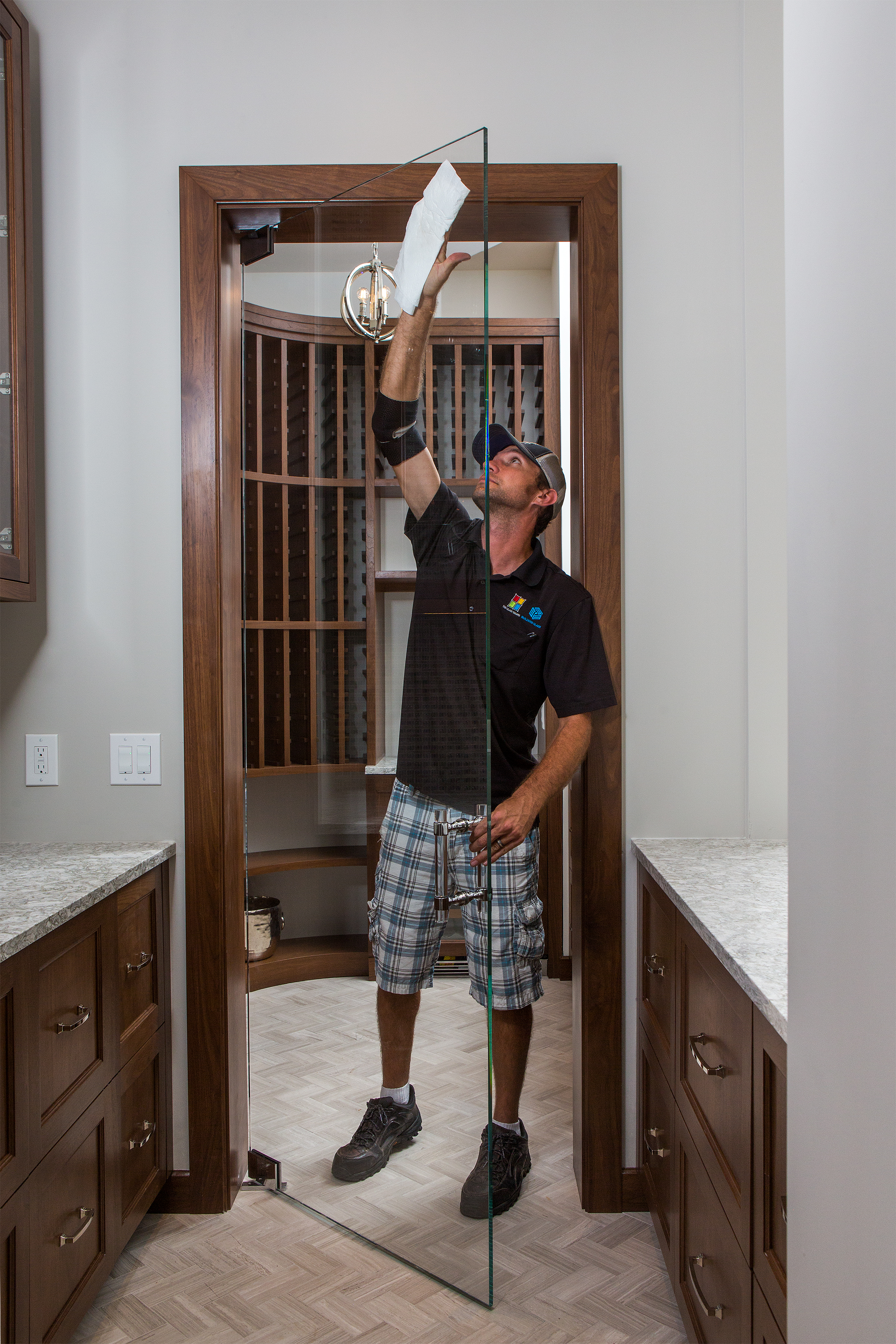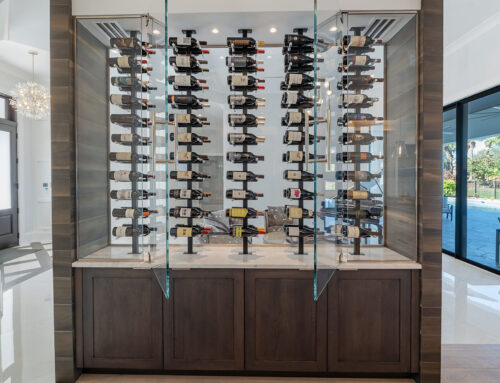Ar you concerned about Glass Wine Cellar Condensation?
Here in sunny Southwest Florida many are concerned about wine cellar Condensation on their Glass Wine Room or Cellar. Like a glass of iced tea on a warm day, wine cabinets are cold on the inside, and this coldness can cause moisture from the warm, humid air to condense on any surface (commonly metal or glass) that conducts heat from the inside to the outside. Therefore, locks and metal strips that are exposed to the inside and the outside environments will accumulate condensation on the warm side.
Should we worry about Condensation?
We are here to tell you, from experience that Condensation on the Glass is non-issue for us. Below is a helpful list of tips and troubleshooting on condensation.

Wine Cellar Condensation can be addressed with some of the following tips:
- Raise the temperature set-point to 60 degrees or above.
- Humidity- make sure the humidity in your cellar is close to 70 percent, lower if needed but keep above 50%, and keep your home within 10 percent of this. The higher humidity in the cellar can lead to more condensation issues.
- 60 degrees and even up to 65 degrees is more than suitable temperature to store your wine collection for 3-10 years. Vintage wine collectors storing bottles for 10 plus years will need to keep their cellar at 55 though.
- Build the thermal mass inside the cabinet to reduce the cycle time spent cooling the air in the empty space. If you don’t have enough wine bottles in your collection, buy more! Or consider storing inexepensive bottles to avoid any void space.
- Keep the first 3-4 rows clear in the column directly below the cold-air discharge (front column only). This will stop the cold air from “splashing” against the center post.
- If you are having condensation issues, add or check the seals between the door(s) and the fixed panels of glass to ensure there aren’t any leaks in the seals. Alternatively too tight of seals can also be the culprit. If your doors are sealed so tight that their is no air leakage, this creates a dramatic variance in the temperature of the glass from the outside to the inside. Allowing a small 1/8″ of air to escape around the perimeter of your glass will ironically solve the problem in most cases. The air leakage will keep the glass temperature on the inside of the glass more consistent with the outside of the glass.
- If possible, cool down the ambient environment (but if using a fan, avoid blowing air at the wine cabinet, which will worsen the problem). If you head north for the summer and are used to turning your air conditioning up to 78 or 80 degrees, you might have a condensation problem in your cellar. Try finding the sweet spot temperature, probably closer to 74 degrees.
- If you’re using a bottle probe, which increases cycle times on and off, discontinue use until the temperature cools down.
- If the condensation is coming into contact with wood, wipe it away frequently to prevent damage to wood surfaces, warping of the doors and mold.
For more information about creating your Glass Wine Cellar and also climate control read this blog post.


